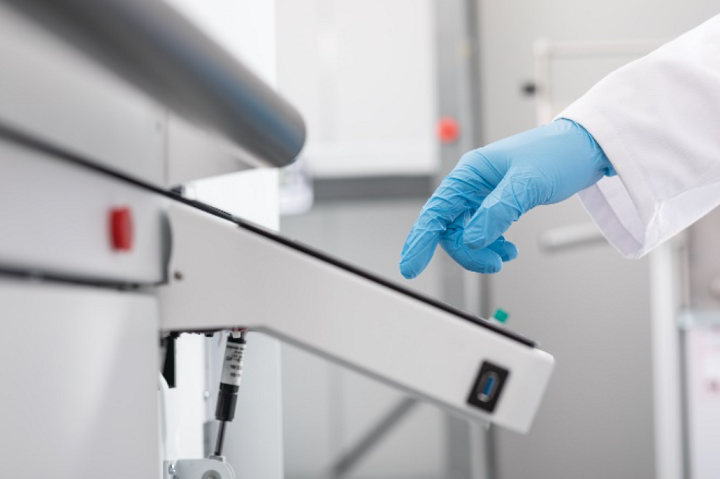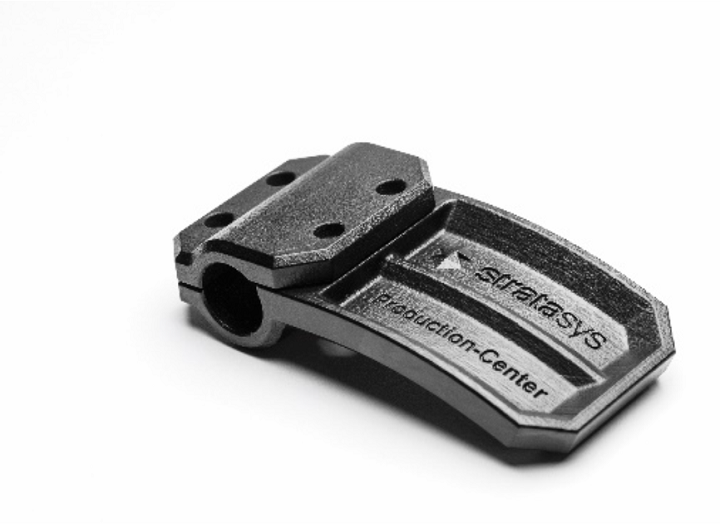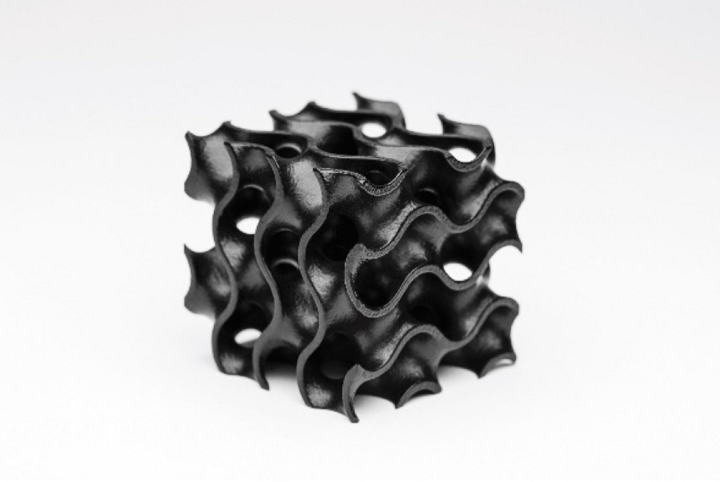In January, Stratasys (NASDAQ: SSYS) completed its acquisition of resin-based Programmable PhotoPolymerization (P3) technology startup Origin, before introducing its new color-free PolyJet J850 Pro in February. Just a few weeks later, the polymer 3D printing leader announced that it was acquiring industrial SLA printing solutions provider RPS, and launched a new dental 3D printer just last week. That brings us to today, as the company just shared the news that it’s releasing a brand new line of 3D printers—the H Series Production Platform—based on powder bed fusion (PBF) technology. Specifically, the new production-scale H Series printers will be powered by the company’s industrial-grade Selective Absorption Fusion (SAF) technology, which is the result of over ten years of research and development.
According to an internal market analysis by Stratasys, the applications with the most potential for major growth in the AM industry—reaching approximately $25 billion by 2025—are related to manufacturing. CONTEXT estimates that, from now until 2024, polymer PBF 3D printer revenues will likely see a compounded growth rate of 21% per year. Stratasys, which reported increased revenues and shares in its Q4 and full-year 2020 financial results, is in a pretty good position right now to serve the growing market for 3D printed mass production manufacturing parts in several industries.
 The H Series™ Production Platform will be powered by Selective Absorption Fusion™ technology specifically designed to meet the needs of volume manufacturing.
The H Series™ Production Platform will be powered by Selective Absorption Fusion™ technology specifically designed to meet the needs of volume manufacturing.“3D printing is increasingly transforming production in industries around the world as companies seek to move with more agility and efficiency, which is why we have put production parts at the heart of our business strategy. SAF technology represents a significant innovation that opens up new opportunities to address applications in industries such as automotive, consumer goods and electronics, and industrial equipment,” Omar Krieger, Stratasys’ executive vice president of product strategy and corporate development, said in a press release. “As a result, we will enable a shift of many applications from traditional manufacturing and also enable the creation of products that can only be produced additively.”
The company’s SAF technology was designed to meet the needs of volume manufacturing, and is said to offer “production level throughput for end-use parts.” A counter-rotating roller coats powder layers onto the print bed, and also prints absorber fluid as well, which images the part layers. These imaged layers are then fused together when an infrared (IR) lamp is passed over the whole print bed, and the process steps are performed in the same direction across the bed in order to ensure uniform consistency and thermal experience for all parts, no matter where they are located in the build.
According to the release, Professor Neil Hopkinson, the Director of Technology at Xaar 3D and the original inventor of High Speed Sintering (HSS) technology, also invented the technology behind SAF. The HSS process sounds similar to SAF 3D printing, so I’m guessing that means Stratasys’ new platform is powered by a form of HSS. This all makes sense, as Stratasys increased its stake in Xaar from 15 to 45% two years ago.
In a single full-width pass, SAF technology selectively jets high energy-absorption HAF fluid onto different areas of a layer of powder-form material. Then, industrial piezoelectric print heads jet either single or multiple drops of this fluid to efficiently produce fine details or large areas, respectively, “without compromising throughput.” Selected areas, and underlying particles, are fused with radiated IR energy, and the technology’s thermal control helps negate quality fall-out and warping.
Because the technology supports the use of specialty functional fluids to process a variety of powders, and reduces the peak temperatures typically required in the print bed, SAF seems like a good choice for production applications. Additionally, the technology’s Big Wave powder management system makes sure that the necessary amount of powder is always evenly distributed across the bed, and any overflow is recirculated fast, which decreases powder aging, reduces powder thermal exposure, and brings down operational costs.
 SAF technology provides part consistency regardless of their placement in the build.
SAF technology provides part consistency regardless of their placement in the build.In creating its SAF-powered H Series Production Platform, Stratasys is looking to increase the number of applications it’s able to serve across even more industries. The company says that its new AM platform “ensures satisfaction and high production yield,” due to its consistency, reliability, and high part quality, in addition to what it calls a “competitive cost per part at production level throughput.” Additionally, because its SAF technology can process different kinds of materials, including elastomers and polyamides, the company should be able to leverage its existing relationships with chemical companies to quickly introduce more materials to the market.
Commercial availability of Stratasys’ new H Series 3D printers, based on SAF technology, is expected in Q3 of 2021. On Wednesday, April 7th, the company will host a live conversation on LinkedIn and Facebook, and Professor Hopkinson will join Stratasys leaders to share more information, and answer questions, about the technology and its development, and how it fits in the Stratasys portfolio.
 Tight thermal control avoids warping, quality fall-out, and reduces peak temperatures required in the bed, making SAF technology ideal for production.
Tight thermal control avoids warping, quality fall-out, and reduces peak temperatures required in the bed, making SAF technology ideal for production.Naturally, we’ve been waiting for a technology that can compete with HP’s Multi Jet Fusion to be released and this might just be it. With the aforementioned acquisitions, in addition to Stratasys’ research into metal 3D printing, we’re seeing the firm quickly expand its technology portfolio, which is increasingly competitive with 3D Systems in terms of breadth. As 3D Systems is planning to release its own fused filament fabrication technology, the competition may just be starting to heat up.
(Source/Images: Stratasys)
Subscribe to Our Email Newsletter
Stay up-to-date on all the latest news from the 3D printing industry and receive information and offers from third party vendors.
You May Also Like
Precision at the Microscale: UK Researchers Advance Medical Devices with BMF’s 3D Printing Tech
University of Nottingham researchers are using Boston Micro Fabrication‘s (BMF) 3D printing technology to develop medical devices that improve compatibility with human tissue. Funded by a UK grant, this project...
3D Printing Webinar and Event Roundup: April 21, 2024
It’s another busy week of webinars and events, starting with Hannover Messe in Germany and continuing with Metalcasting Congress, Chinaplas, TechBlick’s Innovation Festival, and more. Stratasys continues its advanced training...
3D Printing Webinar and Event Roundup: March 17, 2024
It’s another busy week of webinars and events, including SALMED 2024 and AM Forum in Berlin. Stratasys continues its in-person training and is offering two webinars, ASTM is holding a...
3D Printed Micro Antenna is 15% Smaller and 6X Lighter
Horizon Microtechnologies has achieved success in creating a high-frequency D-Band horn antenna through micro 3D printing. However, this achievement did not rely solely on 3D printing; it involved a combination...






























